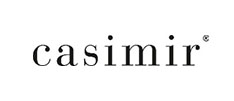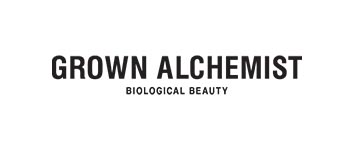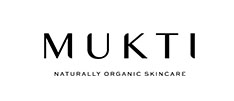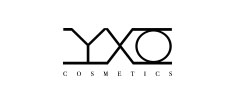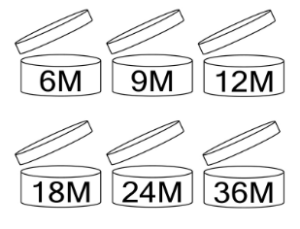Frequently asked Questions
About Great by Date
Great by Date is not a sustainable company because it only offers sustainably produced products. Great by Date is sustainable first and foremost because it uses existing products and resources in the best possible way – in the best possible way for the producing companies and for the consumers.
Great by Date thus offers solutions that benefit everyone involved. First consume what is there before producing something new. That is why Great by Date stands for sustainability.
Great by Date does not claim to have a complete portfolio, but is a partner for all those companies that support the Great by Date approach. The portfolio will grow gradually and thus become more “complete” over time.
There are 7 different motive types for sustainable consumption – do you find yourself?
- Missionary: Want to actively change and save the world. Strong will to transform.
- Connoisseur: Acts sustainably to preserve, but also to show he or she is in!
- Sustainability Buyer: Don’t want to give up anything, but choose the more sustainable consumption alternative.
- Aesthetician: Prestige and appreciation is especially important to them. Sustainability is for personal display.
- Builder: Have a high need for security and safeguard themselves, for example, by growing their own vegetables. Accordingly, they follow sustainable ‘rules’.
- Minimalist: Want to act mainly in a socially desirable way. Soothe their conscience already with small sustainable actions such as separating waste, renouncing plastic bags, etc.
- Recycler: They attach importance to durability and reusability. Existing consumer products are paramount. New consumer products and throwing away old ones is considered a “sin” and an additional burden.
Source: Ströer 2022
About your purchase
For a better orientation how long a product is still in the assortment before it expires and can no longer be sold, Great by Date uses a 3-phase system with a color coding. Phase 1 means that a product still has a (relatively) long remaining shelf life, a product in Phase 3 is (relatively) close to expiration.
Discounts increase the shorter the remaining shelf life is, and the expiration date is always communicated completely clearly. The discount level in the respective phases can vary from product to product – so it does not follow a rigid pattern.
However, there is no guarantee that a product will advance to Phase 3 and that a maximum discount will apply, because the rule is: only while stocks last!
The shipping costs within Austria are currently € 4.90 (standard shipping, incl VAT), provided that the value of goods ordered is less than € 29.00. From a value of goods of € 29.00 there are no costs for delivery within Austria. The shipping costs to Germany are currently € 8.90 (standard shipping, incl VAT), provided that the value of goods ordered is less than € 49.00. From a value of goods of € 49.00 there are no costs for delivery to Germany.
Your products will be sustainably packed by our fulfillment service partner in Tullnerfeld and delivered climate-neutral to your desired address in the fastest possible way (2-5 business days).
Together with our partner, the Austrian Post, we strive to keep the delivery time as short as possible.
You can track your order from the moment it is shipped. You will receive the tracking link with your shipment number by e-mail together with the invoice.
If you unexpectedly do not receive a tracking link or there is still a delay, please inform us by e-mail (shop@greatbydate.com) with your order number, we will be happy to help you!
You can pay your purchase in our online store by credit card (Visa, Mastercard, Maestro) and by eps Onlineüberweisung as well as direct bank transfer (prepayment). Your credit card account or bank account will be charged upon completion of the order. Your credit card information is encrypted and not stored at GBD. In the case of prepayment, the order will be processed and shipped immediately after receipt of payment.
About the products
For cosmetic products with a minimum shelf life of less than 30 months, the indication of the best-before date (MHD) is mandatory. The manufacturer usually uses the symbol of an hourglass together with the note of the date for illustration.
The best-before date is not an expiration date and merely determines that the skin care product will retain its original condition and function when properly stored.
For beauty products with a minimum shelf life of more than 30 months, no note of the MHD is required. The manufacturer must indicate the PAO (Period after Opening), the safe duration of use (when stored properly) after a product has been opened. An opened cream jar with a note of the period of use in months serves as a symbol.
The indication of the shelf life after opening of the skin care products helps consumers to better assess the period of safe use.
Not only packaged foods, but also cosmetics have an ingredients list. The ingredients of a skin care product must be printed on the packaging or on an instruction leaflet.
They are labeled according to the International Nomenclature of Cosmetic Ingredients (INCI for short) and the individual ingredients that make up more than one percent of the contents are listed in decreasing order according to their proportion by weight. This means that the more of a substance there is in the cosmetic product, the higher it is ranked. As a rule, these are the basic ingredients of beauty products – water, fats, alcohol, surfactants. They are usually followed by active ingredients such as plant extracts and excipients, especially preservatives and colorants.
If you want to find out more about the individual terms of the ingredients of your skin care, you can get extensive information on the platform haut.de (link: https://www.haut.de/inhaltsstoffe-inci/) or you can search for individual ingredients of your beauty product in the Cosmetic ingredient database of the EU (link: https://single-market-economy.ec.europa.eu/sectors/cosmetics/cosmetic-ingredient-database_fr).
Food supplements and sports supplements are best stored in their original packaging (usually plastic or glass containers). For storage, a dark, dry place is particularly suitable (possibly a cabinet, drawer). It should be noted that the capsules, tablets, vials or the oil and powder is not exposed to strong light, high temperatures or humidity. Isolated products should be stored in a cool place, in which case they are best kept in the refrigerator. You can always find the correct storage method in the product description.
And why is the correct storage of your dietary supplement so important: the safe intake (according to the specified daily dose) is in any case guaranteed until the specified best-before date. However, the storage place should always be out of reach of children. Ingredients that are completely unproblematic for adults can be dangerous for small children, especially dietary supplements in child-friendly form (such as bears, pellets) entice the little ones to snack.
1. solid parts, such as capsules, tablets,… belong in the residual waste. It is important to note that oily parts should also be disposed of in the residual waste!
2. aqueous parts (e.g. drinking ampoules) can be disposed of via the sink, unlike medicines.
3. to avoid waste and in the course of the recycling process, paper or cardboard packaging should be disposed of separately in the waste paper collection, plastic containers in the yellow garbage can, glass containers in the glass container.
According to the latest estimates, the development costs of new cosmetic products amount to several billion euros for manufacturers every year. The individual research departments and laboratories often work for years on the formulations of new beauty products, and thousands of formulations for active ingredients are patented throughout Europe every year.
And this is how it works: In the laboratory process, the cosmetic product is exposed to various conditions such as heat, cold, strong exposure to light, strong shaking, constant opening… and then tested for its composition and effectiveness. The product ingredients must not dissolve and must be “pure” and safe from a microbiological point of view. If this process is successful, the beauty product is subjected to a practical test (user test). If all test steps show a positive result, the skin care product can go into production from a developmental point of view.
Another stage in the development process is opened up by the new EU Cosmetics Regulation, which lays down strict requirements for consumer protection and obliges manufacturers to provide the following information and conduct themselves: First and foremost, this includes sufficient labeling of cosmetic products (manufacturer, minimum content,…) as well as the notation of the expiration date, so that the user:in know how long they can use their skin care products. However, disposable products, spray cans or non-perishable products such as perfumes, do not require an expiration date.
The labeling of ingredients with INCI offers especially allergy sufferers the possibility to avoid unpleasant consequences of using a product. The safety assessment of cosmetic products, which is carried out by independent experts as part of a toxicological test, proves that the beauty product is really safe for the user with regard to its composition. The EU-wide ban on animal testing must be observed throughout the entire development process. The technical documentation (information on product composition, ingredients, efficacy of the product, safety assessment, manufacturing method, observed undesirable effects of the product during the development process and any complaints) must be retained.
How can you get in touch with us?
If you have any questions, please do not hesitate to contact the GBD team by e-mail (office@greatbydate.com) at any time.
For inquiries from manufacturers/partners, we are still very happy to be available at partner@greatbydate.com.


